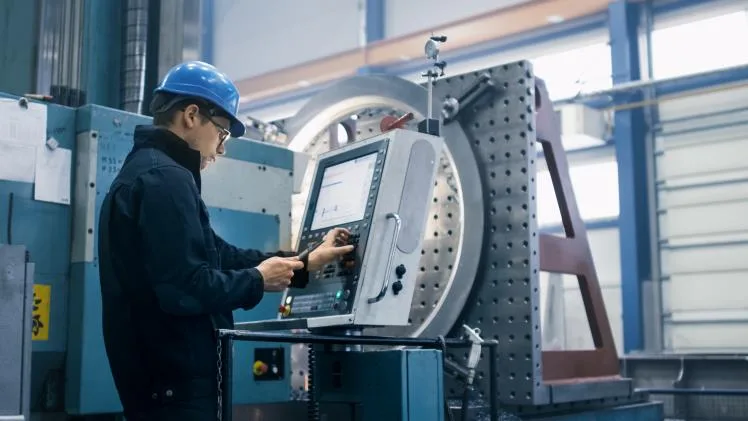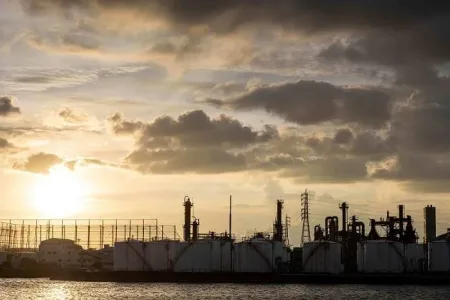Industrial facilities serve an integral purpose in a country’s economy. Heavy machinery, hazardous chemicals, and moving machinery can be just some of the reasons that industrial workplaces can be very threatening environments for employers, employees, and other public members. As a result, it is critical to eliminate all potential hazards in order to ensure a safe and productive industrial environment.
Accidental slips and falls burns from exposure to very poisonous chemicals, and injuries from machinery are all potential hazards. With so many risks that can occur in industrial settings, it is critical to be aware of them and to keep your rules, regulations and checks up to date to ensure optimum health and safety measures have been implemented. This is especially important because up to 2 million individuals are harmed on the job each year as a result of inadequate hazard prevention and safeguards.
By understanding these hazards and implementing effective safety measures, employers can protect their workers from potential accidents and promote a safe working environment. Keeping that in mind, in the article, we will explain the top five hazards present in industrial facilities and what actions you can take as an employer to tackle these hazards.
Top Five Hazards at an Industrial Facility
1) Legionella: The Silent Threat
Legionella bacteria, known for causing Legionnaires’ disease, can silently thrive in industrial facilities. Legionella can be present in water systems such as cooling towers, showers, and hot tubs, putting workers at risk of exposure through inhalation of contaminated aerosols. With industrial settings commonly known for storing large sums of water, improper maintenance of such large sums of water can lead to the growth of legionella bacteria.
Legionella bacteria can pose a threat to one’s health if inhaled. Common signs of legionnaires diseases include; high fever, chills, cough, shortness of breath, muscle aches, headaches, and fatigue. This disease directly impacts the health of your workers and lowers their overall output, affecting the business’s productivity.
Employers must prioritize legionella awareness training and implement preventive measures to combat this hazard. Employers should ensure regular monitoring and maintenance of water systems, proper disinfection protocols, and adherence to established guidelines can help control legionella growth and minimize the risk of infections.
2) Chemical Hazards: Protecting Against Toxic Exposure
Many chemicals and hazardous materials are used in industrial facilities, and they can be dangerous if they spill or leak from their containers. Many of the chemicals and other compounds used in various industrial processes are hazardous to humans, whether inhaled, swallowed, or come into direct contact with skin.
Poisonous or highly corrosive chemicals are commonly used in industrial manufacturing facilities, causing severe and possibly irreversible harm. Workers may be exposed to chemicals such as caustic cleaners, flammable substances such as ethanol, and even bleach-containing items.
As a result, chemicals must be handled with caution. Facilities managers must provide adequate personal protection equipment (PPE) for personnel who must use chemicals, ensure that all staff are adequately taught in categorizing and handling chemicals, and address any injuries sustained. Additionally, conducting a risk assessment can effectively manage all the chemical hazards in your workplace and who might be affected by them. Addressing the hazards would allow employers to come up with control measures to reduce the threat related to chemical use in the workplace.
3) Machinery and Equipment: Safeguarding Workers from Accidents
Powered machines are standard in industrial facilities. Forklifts, lift and reach trucks, and fleet vehicles are examples of these machinery and vehicles.
Workers operating industrial machines, including forklifts, face the daily risk of accidents due to heavy machinery. To enhance safety, workplaces are adopting forklift camera systems, which offer real-time monitoring. For more information on these systems, visit paco1.com. Despite safety measures, accidents can still lead to severe injuries or casualties when struck by these powerful machines.
However, the root cause of these accidents lies in insufficient training. Workers who need to be appropriately trained and competent enough to handle such industrial machines are at a higher risk of causing accidents related to machinery and equipment. These types of machinery and equipment should only be handled by workers with proper training and certification in handling machinery. Workplace health and safety regulations also make it a legal responsibility for employers to only allow a trained professional to operate machinery and equipment in the workplace.
Anyone in charge of operating machines should receive frequent and continuous training from facility management. Supervisors should continually monitor personnel who operate these vehicles in accordance with a predefined timetable. The machinery should be inspected, tested, and maintained on a regular basis for any emergent mechanical faults.
4) Fire Hazards: Preventing and Responding to Industrial Fires
Fire hazards are a significant concern in industrial facilities, as they can lead to property damage, injuries, and even loss of life. With the use of combustible and flammable materials in the workplace and fuel sources, the chances of fire accidents in an industrial setting are pretty high.
With industrial processes requiring heat sources in their operations, these heat sources can combine with surrounding fuel sources to cause a fire emergency. Defaulted equipment is also a root cause of electrical fires in the workplace, with overheating machines and equipment having a significant chance of catching fire. Fire hazards and emergencies harm not only the workers’ health and safety but also damage everything in their reach, including the property. Therefore, it is easy to conclude that fire accidents can cause outrageous damage to a business.
Employers are responsible for taking appropriate measures to mitigate all the fire hazards in the workplace. This includes proper storage and placement of fuel sources from heat sources. Prioritizing fire safety protocols, inspecting and maintaining equipment and machinery, placing fire fighting equipment in the workplace and fire suppression systems. Equipment inspections should be done in regular intervals. Make sure to keep track of this by using a high quality fire inspection software. Employers should also comprehensively train their employees on fire drills and evacuation procedures, as it is vital to ensure a swift and effective response in the event of a fire emergency.
5) Working at Height: Risks and Safety Measures
Working at height can be a standard task in most industrial workplaces. With workers climbing ladders to performing operations on an elevated platform, all these work operations create the hazards of falling from height. Slips and trips account for one of the major causing of falls from height. Slips and trips can be due to many reasons, such as; slipping from a ladder due to improper grip, tripping over objects in the pathway, weak elevated platform that breaks and causes falls, and improper lighting in the workplace.
Injuries from falls from working at height operations can be very serious and, in some cases, even prove fatal. Therefore, employers are responsible for taking action to reduce the causes of falls from slips and trips in the workplace. Implementing guard rails, using a strong elevated platform, proper lighting and provision of safety equipment are some key measures that can help reduce working at-height hazards. Additionally, employers should provide adequate training to their employees that would equip them with the knowledge of how to perform working at height operations safely. Some of these training programs include; working at height training, slips, trips, and falls training, ladder safety training, and PPE training.
Conclusion
In conclusion, industrial facilities are prone to several hazards that can jeopardize worker safety. By raising awareness about these hazards and implementing robust safety measures, employers can protect their workers from potential accidents and ensure a safe working environment. Legionella awareness training and targeted preventive measures are essential to control legionella bacteria’s growth. Industrial facilities can create a secure and productive environment for their employees by prioritizing worker safety and implementing the necessary precautions. Remember, safeguarding workers is not only a legal and ethical responsibility but also a vital investment in the success of any industrial enterprise.



